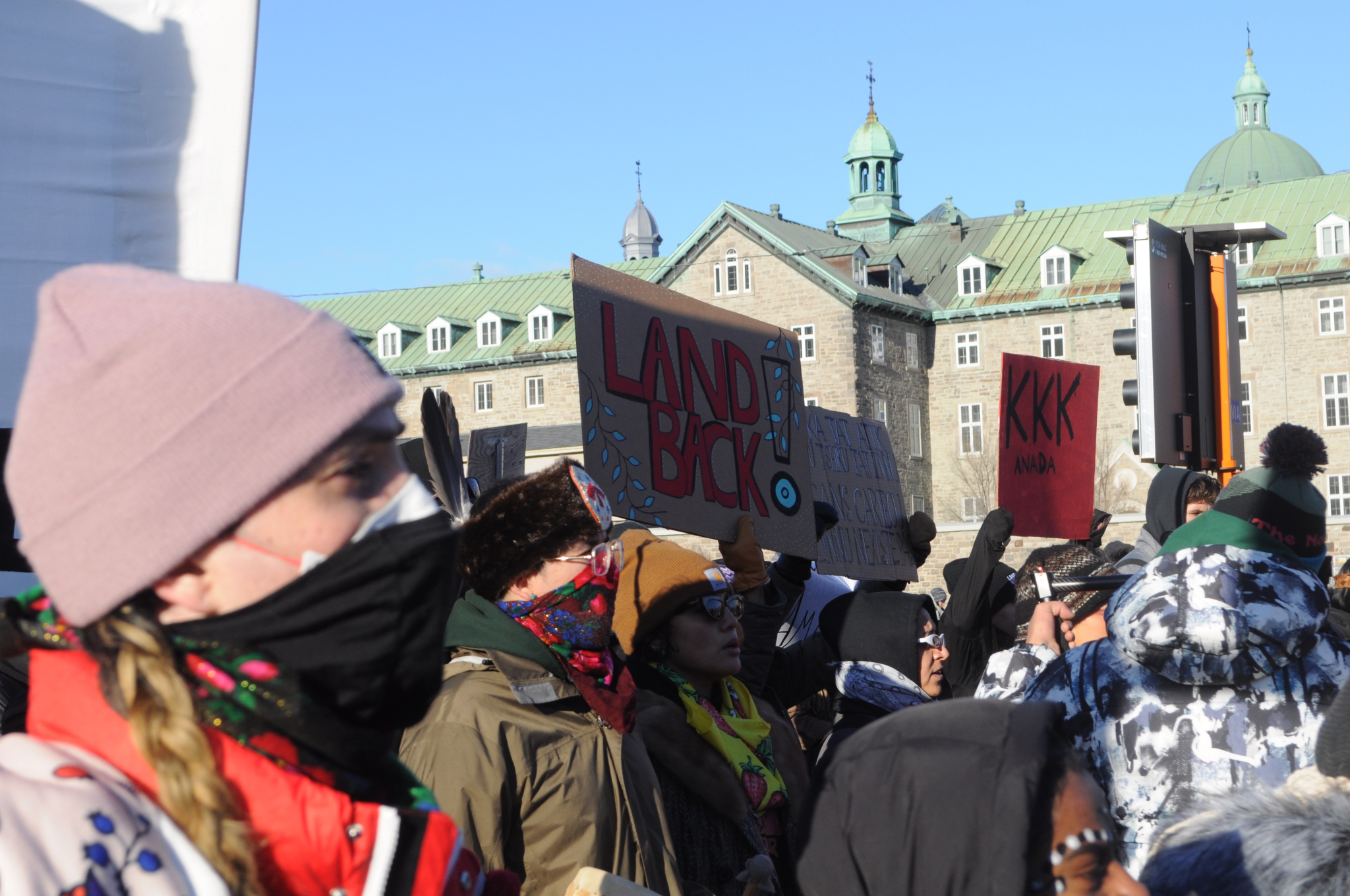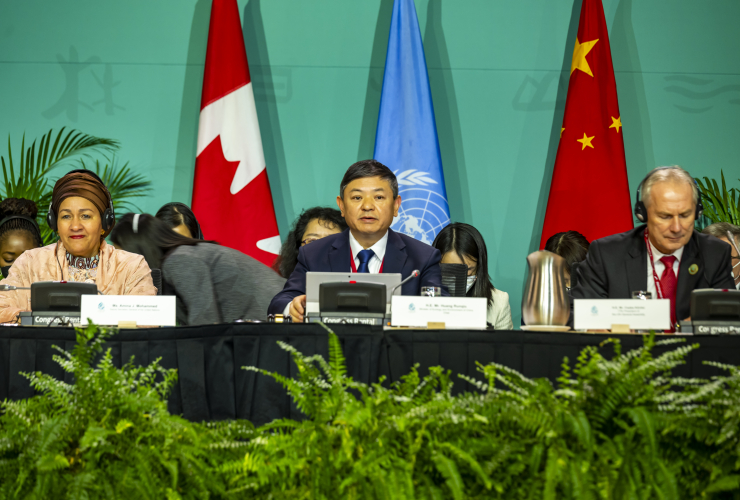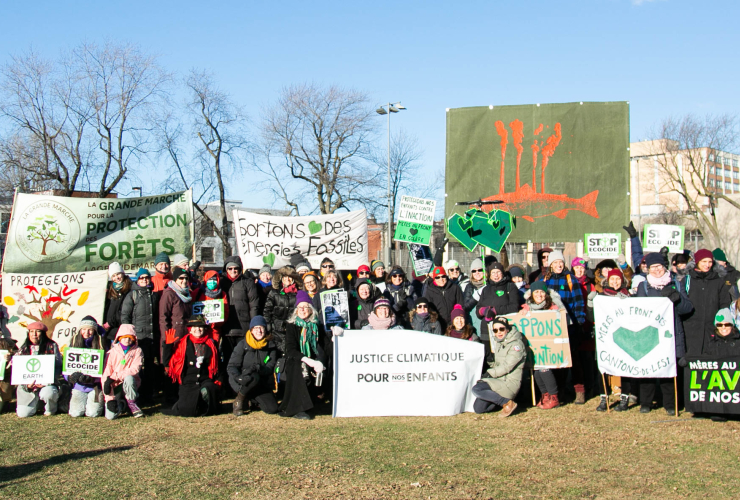A sixth mass species extinction is underway and nine major ecosystems are at the brink of collapse: enter COP15.
For the past week, negotiators from around the world have spent their days and nights holed up in the confines of Montreal’s Palais de congrès mulling over legal text with a fine tooth comb that could make or break the future of our planet. And while the magnitude of this crisis might seem daunting, immediate solutions are at our disposal by recognizing Indigenous territories in Target 3, an outlined goal in the proposed text for the Global Biodiversity Framework to be signed at the close of COP15.
Indigenous territories are overwhelmingly proven to result in equal or better conservation outcomes than protected areas. However, while protected areas are financed from national budgets, Indigenous territories are not financed by states or climate funds. Including Indigenous territories in Target 3 is currently supported unilaterally by the Global South under the leadership of the International Indigenous Forum on Biodiversity. But it's still unclear what agreement looks like from Canada, Norway, the European Union, and New Zealand.
Target 3 is significant because it calls for conserving 30 per cent of the Earth’s land and sea through the establishment of protected areas and other area-based conservation measures. Scientists, including the IPCC, all agree that Indigenous territories are critical to conservation efforts.
Despite this, they are represented nowhere in any UN climate or biodiversity agreements. This sets countries up to infringe on Indigenous rights, especially territorial rights. But immediate action is possible, and Indigenous Peoples are offering their millennia-old knowledge and the richness of their territories to save life on Earth if we recognize Indigenous territories and their rights in Target 3.
Indigenous territories are home to 80 per cent of the remaining biodiversity on the planet and nearly 500 million people spread across more than 90 countries; they represent about 22 per cent of the global surface. Indigenous Peoples and local communities have a vital role in protecting Earth’s biodiversity and so far, the climate and biodiversity conventions have failed to reflect them in their agreements.
This conference comes on the heels of COP27, the most recent UN conference on climate change. And while this COP in Montreal focuses on biodiversity, these issues are all interconnected. Nature degradation and transformation are the biggest developmental challenges of our generation. The destruction of nature threatens humanity, aggravates the climate crisis and accelerates the extinction of vulnerable species around the world. We are facing an ecological crisis of epic proportions aggravated by warming temperatures and perverse extractive activities that devastate life on Earth. The truth is uncomfortable, but straightforward — our planet is at a tipping point and no one wants to pay the bill for this feast.
The policies adopted in Montreal will chart a course for the future of the planet, including the more than 5,000 Indigenous nations who inhabit and manage these ecosystems. Many are hoping that an outcome from this conference leads to a “Paris Agreement” for nature.
This is why Indigenous leaders, researchers, and environmental organizations from the initiative “Amazonia for Life 80% by 2025” are urging leaders to clearly recognize Indigenous territories in Target 3 — not as an appendix to protected areas and other conservation mechanisms because Indigenous territories do not exist for conservation. Conservation results from the cosmovision, knowledge systems, and technologies of Indigenous Peoples.
Amazonia is the habitat with the greatest biodiversity in the world. Even Canada’s Prime Minister Justin Trudeau put the spotlight on the Amazonia during the G7, saying, “We need to act for the Amazonia and act for our planet — our kids and grandkids are counting on us.”
But oil and gas expansion in the Amazonia is a rapidly accelerating existential threat to global climate stability and biodiversity, and to tens of millions of Indigenous people and local communities who live inside areas slated for oil and gas exploration and development. Legal and illegal mining is also destroying the Amazonia, polluting the rivers, and is one of the key drivers of violence against environmental defenders and Indigenous leaders in the region.
We are in the home stretch for meaningful action to protect the planet. We expect that the opposing countries will embrace the legacy and leadership of Indigenous peoples: Maori, Sami, and those who have cultivated biodiversity in what we know today by the names of countries and continents like Europe, the Americas, Norway and New Zealand.
As we inch closer towards a global biodiversity framework, efforts are moot if Indigenous territories aren't explicitly included in Target 3. COP15 provides Canada and other colonial countries an opportunity to heal their pasts by taking a leadership role to bring this text onto the right side of history, one of solidarity and reconciliation. Recognizing Indigenous territories is among the most important immediate measures to make these negotiations a turning point to save life on Earth.
Gregório Mirabal is general co-ordinator of the Coordinator of Indigenous Organizations of the Amazon Basin (COICA). Alicia Guzmán León is Stand.earth’s Amazon program director; co-coordinators of the initiative Amazonia for Life: protect 80% by 2025.







Comments